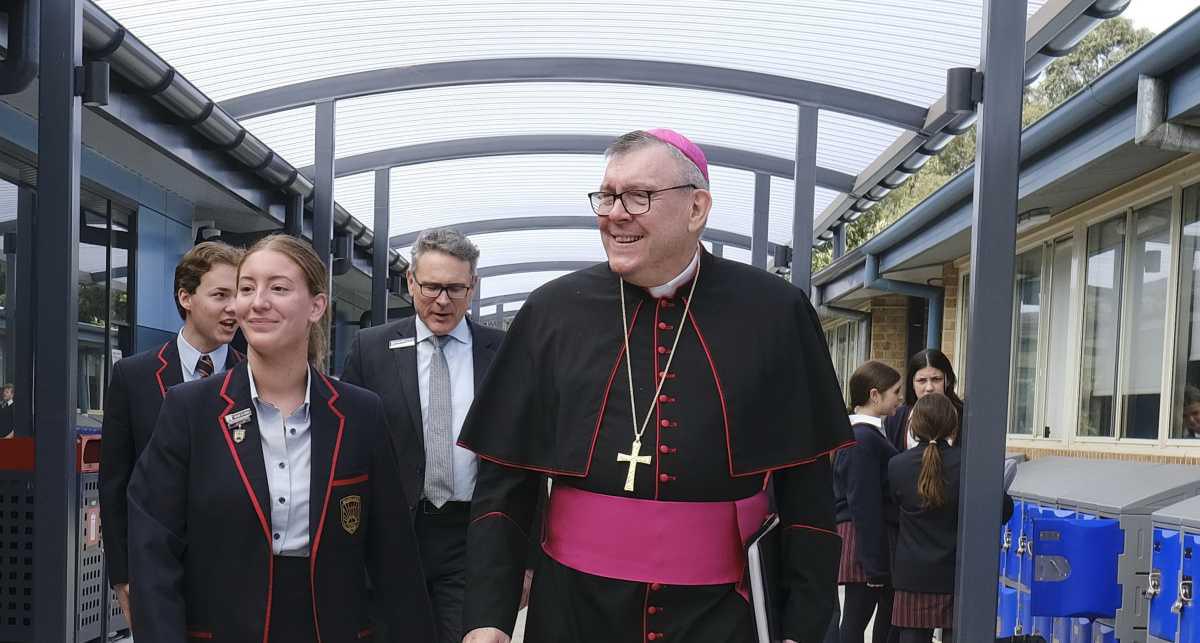One of the major calls of the Second Vatican Council was to read and respond to the signs of the times and we do so through the light of faith. From the days of the Apostles the Church has walked alongside people, responding to their needs and the realities in which they live, in order to “bring the light of Christ to all”[1] and in turn to be bearers of Christ’s love.
The call of our Catholic schools, as bearers of Christ’s love, is to bring the light of Christ to all. Therefore our Catholic schools are pivotal beacons of hope for today’s young people, especially those who can often feel a lack of hope.
As belief in a loving creator God continues to be counter-cultural, our society is experiencing greater confusion, fragmentation, and isolation than in any other time in living memory. It is against this backdrop that our Catholic schools must bring to bear the light of faith and an experience of that relationship with the person of Jesus. But while the challenges confronting students and school communities today are significant, in the spirit of Pope St John XXIII we reject the “prophets of doom” who “say over and over that this modern age of ours, in comparison with past ages, is definitely deteriorating”.[2]
You don’t need to spend much time with our students to understand why we are so optimistic about the future. The opportunity to play a part in forming the children and young people in our schools and developing that relationship with Jesus should be a source of great motivation to all of us called to contribute to the mission of Catholic education.
Authenticity and adventure
I am very fortunate to visit our Catholic schools on a regular basis. It is clear when I speak with students that they are as informed, determined, and hungry for meaning and purpose as any generation before them. They are seeking that relationship with Jesus and indeed, they are particularly open to the call to adventure and self-sacrifice for causes they believe are authentic and worthwhile.
A life of faith requires courage, strength, and conviction. Our students are not lacking in these attributes. But if we water down the Catholic faith, offering platitudes and shying away from the sometimes difficult but vitally important conversations, we can expect young people to view it as irrelevant, hypocritical, and disconnected from the realities of their lives, and to seek adventure and authenticity elsewhere. This would be a great loss, both for the Church and for our wider society.
It is therefore the urgent task of Catholic educators to present the truth of our faith tradition—in all its richness, depth, and complexity—to every student who attends a Catholic school. This task spans the entire school experience, from the foundations in the primary years, through to the testing, exploration, and questioning that is both natural and expected in the formative teenage years.
A golden thread
I am greatly encouraged by how Lighting The Way 2023+ proposes to approach this task. The different facets of our schools—learning and teaching, formation, wellbeing, workforce, and more—are not treated in isolation. Their interconnectedness is acknowledged and a golden thread runs throughout, with each part of this plan reflecting the centrality of the development of a personal relationship with Jesus, the Catholic faith, and the Tradition of the Church.
Our Catholic schools are not educational institutions with faith bolted on. Equally, they are not churches that dabble in academics. We offer something different: a holistic education experience that provides students with opportunities to grow in their faith, achieve their learning potential and develop in all aspects of who they are—as they benefit from the latest evidence-based pedagogy and the timeless wisdom of our Catholic faith.
This strategic plan presents a clear path to ensuring that our Catholic schools will be high quality centres of learning where faith is experienced and lived out as an integral part of the student experience. In its priorities and ambitions, the plan avoids platitudes and generalities. Instead, it chooses to look clear-eyed at the realities facing students, teachers, and school communities, and offer specific responses which are only possible because of the distinct character and identity of Catholic education in the life of the Church.
In all things, we are bearers of Christ’s love
St Paul, in his first letter to the Corinthians, tells us that when all is said and done, faith, hope, and love will remain, but the greatest of these is love (1 Cor 13:13). The challenges of our time are great, but love—and God’s love for us—is greater. The challenges of our time will pass, but love will remain. And, in Jesus, we have love’s perfect example.
I am confident that in Lighting The Way 2023+, we have a plan that will ensure our Catholic schools continue to be Christ-centred and transformative (Rom 12:2), shining the light of faith and bearing Christ’s love in all that we do. We are in a unique position to support our students to grow in their faith and improve in their learning because of who we are and because of who He is. And that—as it always has been and forever will be—is cause for much hope.
Most Rev Brian Mascord DD
Bishop of Wollongong
1 SECOND VATICAN ECUMENICAL COUNCIL, Dogmatic Constitution on the Church Lumen Gentium, 1.
2 JOHN XXIII Solemn Opening of the Second Vatican Council (11 October 1962)



